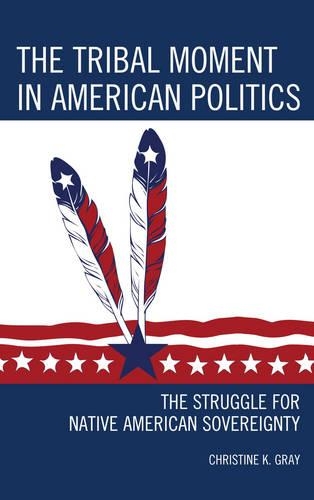
The Tribal Moment in American Politics: The Struggle for Native American Sovereignty
(Paperback)
Publishing Details
The Tribal Moment in American Politics: The Struggle for Native American Sovereignty
By (Author) Christine K. Gray
Bloomsbury Publishing PLC
Rowman & Littlefield Publishers
15th July 2015
United States
Classifications
Tertiary Education
Non Fiction
Indigenous peoples / Indigeneity
323.1197073
Physical Properties
Paperback
232
Width 152mm, Height 229mm
Description
In the tribal moment in American politics, which occurred from the 1950s to the mid- to late-1970s, American Indians waged civil disobedience for tribal self-determination and fought from within the U.S. legal and political systems. The U.S. government responded characteristically, overall wielding its authority in incremental, frequently double-edged ways that simultaneously opened and restricted tribal options. The actions of Native Americans and public officials brought about a new era of tribal-American relations in which tribal sovereignty has become a central issue, underpinning self-determination, and involving the tribes, states, and federal government in intergovernmental cooperative activities as well as jurisdictional skirmishes. American Indian tribes struggle still with the impacts of a capitalist economy on their traditional ways of life. Most rely heavily on federal support. Yet they have also called on tribal sovereignty to protect themselves. Asking how and why the United States is willing to accept tribal sovereignty, this book examines the development of the order of Indian affairs. Beginning with the nations founding, it brings to light the hidden assumptions in that order. It examines the underlying deep contradictions that have existed in the relationship between the United States and the tribes as the order has evolved, up to and into the tribal moment.
Reviews
"The Tribal Moment covers an important time in our history. It is written with fairness and accuracy and presents many things in a new light. Gray's take on the IRA is very important and well presented. It's a fine book and a really great read." -- Chuck Trimble, Oglala Lakota Nation, founder of the American Indian Press Association and former executive director of the National Congress of American Indians
"Reading The Tribal Moment [made me realize] how much I did not know about the tribes journey from expected extinction to permanent status as sovereign dependent nations. Gray's presentation of the idea of an order of Indian affairs within the United States, and her analysis of the roots of that order and its changes and continuities over time, came as a revelation. She has made visible an historic process of constitutional dimensions whereby a nation founded on liberty and equality violated its own values in its treatment of the first Americans. She shows how, in the 1960s and 1970s, action by Native American activists, tribal leaders, and public officials led, finally, to recognition by the United States that the tribes' standing is permanent. The book offers powerful insights into the costs imposed by America's growth to greatness. It illuminates a different dimension of American history." -- Edgar S. Cahn, special assistant to Sargent Shriver, Office of Economic Opportunity, and author of Our Brothers Keeper: The Indian in White America
The period from the mid-1940s (with the founding of the National Congress of American Indians) through the late 1970s saw a rise in activism on the part of American Indians that revealed the plight of tribes in this country. Although often overlooked by the general public, the new tribalism and actions such as the takeover of Alcatraz Island in 1969 and the standoff at Wounded Knee in 1973 made such ignorance impossible. Gray (Univ. of the District of Columbia David A. Clarke School of Law) discusses how this activism emerged and how it was instrumental in helping to change the course of American Indian policies. Beginning just before the outset of the termination period, the movement can be linked to such congressional actions as the Indian Self-Determination and Education Act and numerous land settlement acts, and to the shift toward self-determination and self-governance that is seen today. Many works look at this shift in policy, but few touch on tribal activism as being instrumental in the change. . . .The information is valuable and insightful. Summing Up: Recommended. Upper-division undergraduate, graduate, and research collections. * CHOICE *
Author Bio
Christine K. Gray is professor, University of the District of ColumbiaDavid A. Clarke School of Law, former CEO of TimeBanks USA, and an independent consultant on civic engagement and community development.
